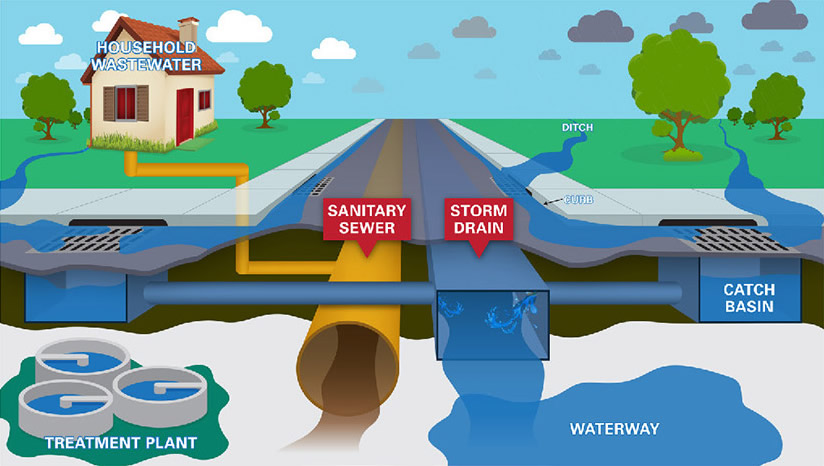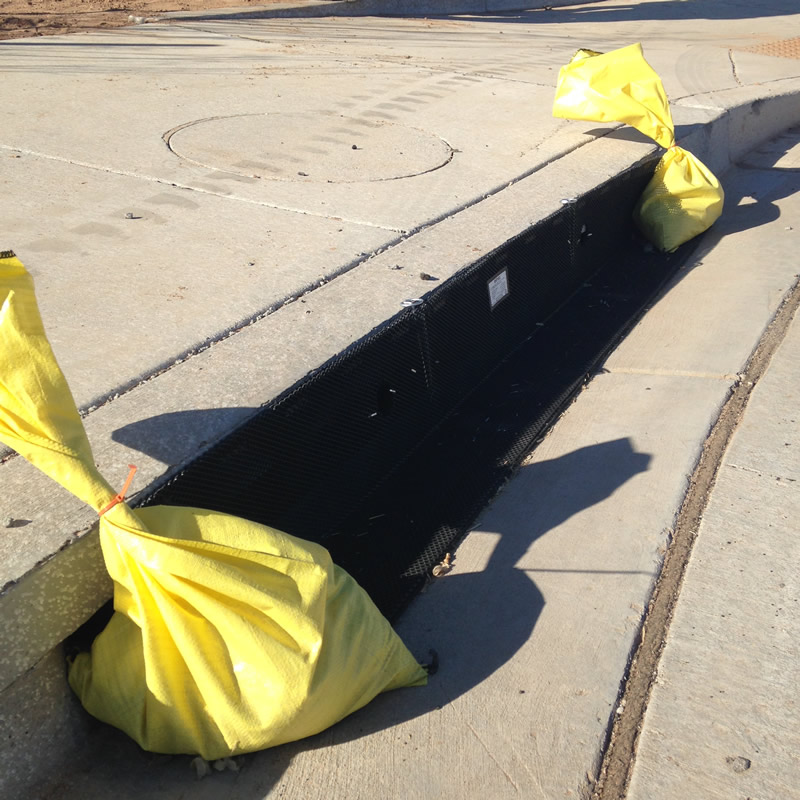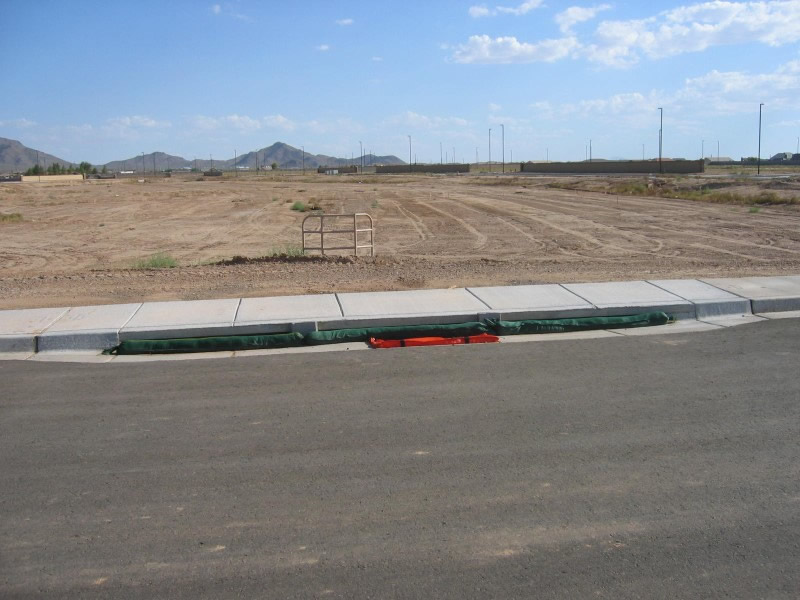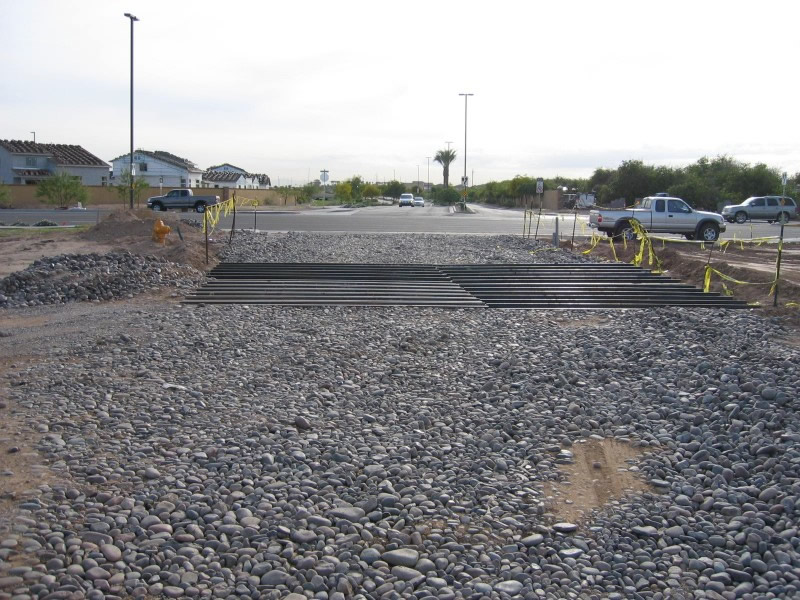Stormwater Runoff Facts
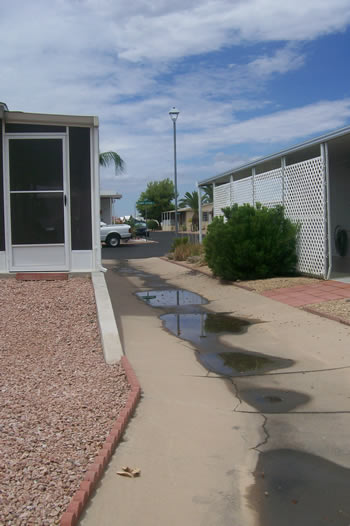 Rainfall that does not soak into the ground due to impervious surfaces, like pavement and concrete, becomes runoff and flows overland into streets, curb and gutters into catch basins, storm pipes, retention basins, channels, and washes or rivers.
Rainfall that does not soak into the ground due to impervious surfaces, like pavement and concrete, becomes runoff and flows overland into streets, curb and gutters into catch basins, storm pipes, retention basins, channels, and washes or rivers.
Unlike sanitary sewer, which is water that flows down the bath, shower, sink, or laundry and drains to a wastewater treatment plant, runoff from rainfall and snowmelt generally flows unimpeded and untreated through the environment.
A natural environment, like a desert or mountain, can absorb (infiltrate) a lot of rainwater; and when the sponge (soil profile) is saturate the water begins to accumulate and flow as rivulets, streams, or rivers. Because this natural environment has minimal uses, like hiking or low-impact grazing, very few pollutants are expected in the runoff.
In contrast, the built environment, like Maricopa County or greater Phoenix metro, has many uses and activities and, unsurprisingly, several potential pollutants. Example activities include transportation, residential and commercial development, and occasionally concentrated feeding operations.
Pollutants must be managed at the source to ensure the environment downstream (and there is always someone or something downstream) is protected for others to use, either for recreation (fishing or swimming) or source water (to drink from and bathe in). Below are lists of pollutants and sources, and potential actions you can take to make a difference in protecting our runoff.
Common pollutants in the built environment:
- Nutrients (ammonia, phosphorus), chemicals (pesticides)
- Bacteria (fecal coliform, escherichia coli)
- Metals (lead, copper, zinc)
- Hydrocarbons (oils and greases)
- Soils, yes, dirt is a pollutant in many senses
- Garbage (Styrofoam cups, cigarette butts, clothing, cushions, leaf litter)
Sources of pollutants:
- Lawn fertilizers and mulch, and bug spray or weed killer
- Pet and wildlife excrement, concentrated feeding operations, and sanitary sewer overflows
- Vehicle and equipment wear (brake pads, leaky hoses)
- Gas-powered cars and trucks (combustion, leaky parts)
- Construction, wind storms (loose earth)
- Litterbugs and upended or full trash bins
Actions to minimize pollutant deposition to runoff’s path:
- Use fertilizers in accordance with the manufacturer's label
- Minimize use of organic compost – use just enough
- Pick up after pets
- Resist the urge to feed ducks and geese at ponds
- Maintain vehicles in good repair, fix leaks and clean up spills
- Stabilize driveways and parking areas; park only on improved surfaces
- Bag and tie trash; avoid placing trash outside of the garbage bin – take it with you if you must
